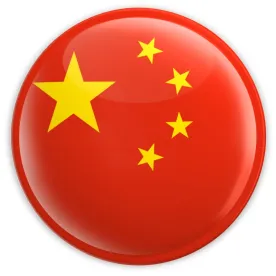The medical device industry in China is highly-regulated and China adopts a “pre-market” recordation or approval system for medical devices. Before any medical device can be manufactured, imported, distributed, or sold in China, one must first go through certain filing or registration procedures with the National Medical Products Administration of the PRC (the NMPA). At the same time, gaining access to China’s medical device market is strategic for local and foreign medical device manufacturers alike.
Classification of medical devices
As set forth in the Regulations on Supervision and Administration of Medical Devices, a “medical device” is an instrument, equipment, apparatus, in-vitro diagnostic reagent, or calibrator, or any similar material or article, including medical software, which is used directly or indirectly on the human body. There are three general classifications for medical devices in China:
- Class I: “low risk” medical devices, which are safe and effective when administered routinely (e.g., surgical clothing and caps and inspection gloves).
- Class II: “medium risk” medical devices, which are safe and effective when administered with control measures (e.g., blood pressure monitors, thermometers, and electrocardiogram (ECG) machine).
- Class III: “high risk” medical devices, which are intrusive to the human body, are for use in life support, or which carry risks to the human body, and which must be strictly controlled so as to be safe and effective (e.g., implants, ultrasound scalpel, hemodialysis machine).
Path to market entry
A Class I medical device requires only a “filing” with the provincial or municipal level NMPA (if it is locally manufactured) or with the central level NMPA (if it is imported). In either case, the filing process is relatively straightforward and would require the submission of certain technical documents, including the technical requirements and instruction for use to the NMPA for its administrative review. This review generally takes the NMPA one to five business days to complete.
A Class II or Class III medical device must be “registered” with the central-level NMPA and a medical device registration certificate (with a five-year term) must be obtained before it can be manufactured or distributed in China. One exception to this is that, with China’s move to market opening, as of 2 April 2018, medical institutions in Lecheng International Medical Tourism Pilot Zone located at Bo’ao Town of the Hainan Province (the Hainan Pilot Zone), may apply, on the grounds of emergency, with Hainan provincial-level NMPA to import foreign-manufactured Class II or Class III medical devices that are not yet “registered” with central-level NMPA.
The central-level NMPA registration process for a Class II or Class III medical device, whether locally or foreign-manufactured, will encompass the following:
- sample testing of the device with a NMPA-authorized testing center to obtain a valid testing report;
- conducting clinical evaluation through clinical trials or through a desktop clinical evaluation. In principle, clinical trials are required for all Class II and Class III medical devices, unless such devices are captured by the exemption category as promulgated by the NMPA (as amended from time to time), or the safety and effectiveness of such devices can be proven in a desktop clinical evaluation based on the data obtained from the clinical trials or the clinical use of the same type devices.
- preparing product technical requirements and submitting application dossier to the NMPA for a technical review by the Center for Medical Device Evaluation of the NMPA;
- establishing the quality management system according to standard of ISO 13485 for a review by the NMPA (this is not required for a foreign-imported medical device); and
- providing any supplemental information or documents as may be requested by the NMPA.
The above process can take 18 to 24 months to complete assuming that a desktop clinical evaluation suffices and no clinical trials are required.
A foreign manufacturer would have to make submission through its China subsidiary, China branch, or an agent in China as appointed by the foreign manufacturer. All information submitted to the NMPA or its authorized testing center must have a Chinese language counterpart.
Real-world data
In December 2018, the Food & Drug Administration of the United States (the U.S. FDA) published a framework for Real World Evidence Program, where the U.S. FDA explained that:
- “real-world data” are “data relating to patient health status and/or the delivery of health care routinely collected from a variety of sources”; and
- “real-world evidence” are the “clinical evidence about the usage and potential benefits or risks of a medical product derived from analysis of real-world data”.
Real world data is essentially data derived from a number of sources that are associated with outcomes from patients in real-world settings, such as patient surveys, electronic health records, claims and billing information, etc., as opposed to the traditional clinical trials.
The discussion of real-world data and real-world evidence has attracted attention in China for a number of years and a number of government initiatives have followed.
In April 2019, the NMPA launched a research program on using real-world data in medical device clinical evaluations. In June 2019, the NMPA commissioned the real-world data pilot program in the Hainan Pilot Zone (the Hainan Pilot Program). Three out of ten products participating in the Hainan Pilot Program received approval in November 2019 to commence real-world studies on the data collected from the Hainan Pilot Zone for clinical evaluation purpose. A task force comprising experts from the NMPA and the Hainan government has been providing guidance to the medical device manufacturers of these three products.
Further, as announced by the NMPA in September 2019, a branch office of the Center for Medical Device Evaluation of the NMPA will also be established in the Hainan Pilot Zone to review the medical device registration applications as one of the facilitation measures to the Hainan Pilot Program.
On 13 December 2019, the NMPA circulated the Guideline on Use of Real-world Data in Medical Device Clinical Evaluation (Draft) (the RWD Draft). Under the RWD Draft:
- “real-world data” is data from a real-world medical environment, other than the traditional clinical trials, that can reflect the health status of the patients and the course of medical services in actual treatment situations;
- the real-world data can be derived from a wide variety of sources, including routine healthcare records, traditional epidemiological studies, surveillance data, administrative database, and other data reported by the patients; and
- the analysis of real-world data will generate clinical evidence (i.e., real-world evidence) that is related to product use, potential risks, and benefits.
The RWD Draft sets out a non-exhaustive list of situations where the real-world data can be used for clinical evaluation in China:
- providing clinical evidence for comparison of the same type of products;
- supporting device registration, alongside existing clinical evidence;
- allowing foreign medical devices to be approved on an expedited basis for urgent medical needs;
- as the external contrast data for a single group of experiments;
- providing clinical data for the establishment of single-arm objective performance criteria;
- supporting an amendment to existing medical device registration in terms of scope of application, intended use, and clinical claims set out in the instruction for use;
- supporting post-market studies on products with a conditional approval;
- for use in the evaluation of long-term safety and efficiency of high-risk implants;
- for use in the clinical evaluation of medical devices for treatment of rare diseases throughout the full life cycle to expedite the product registration; and
- post-market surveillance.
New pathway to market entry
On 26 March 2020, through the use of real-world data and pursuant to the Hainan Pilot Program, Allergan’s XEN Glaucoma Treatment System became the first foreign-manufactured medical device registered in China. It took only five months from the real-world studies that started in November 2019 to the final registration approval of the NMPA. If this had followed the normal route of clinical trial, the registration process could have taken 3-5 years to complete. NMPA has separately indicated that several products are currently being reviewed for registration under the Hainan Pilot Program.
The RWD Draft becoming law will provide alternatives to the current clinical evaluation regime for medical devices in China. This should providing significant time and cost saving in registering Class II and Class III medical devices.
The RWD Draft and the NMPA initiatives are already providing a new path for medical device registration in China. For example, a foreign manufacturer may join the existing Hainan Pilot Program, or take advantage of the RWD Draft once it becomes law to use real world data for clinical evaluation and waiving any clinical trial requirements.






 />i
/>i

